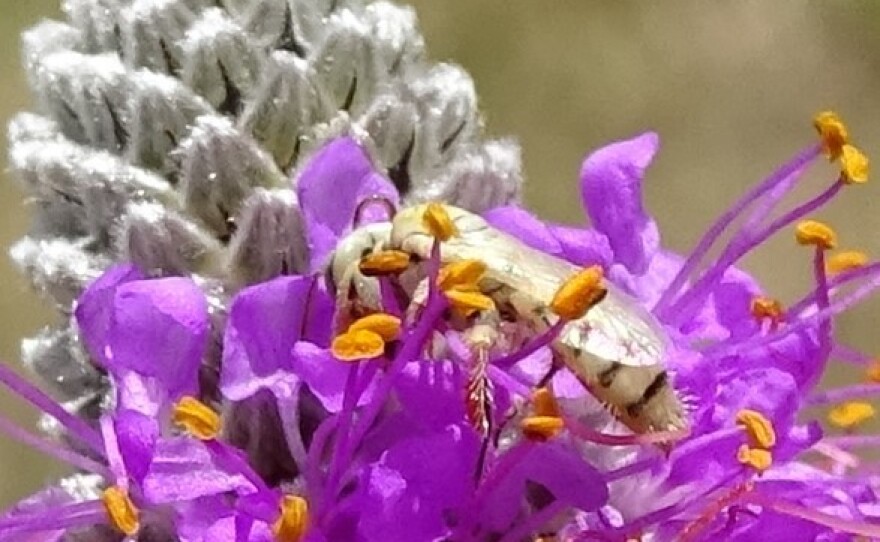Bell Museum summer camp at the North Central Research and Outreach Center in Grand Rapids
Long Lake Conservation Center near Palisade
This week, Roger Sorben from Sorben Honey visited the beehive.
Kathleen Maloney Hermerding from Brainerd
Chad Kaddatz’s class at Little Falls Middle School
During the summer months, Chad’s class of middle school science students submit photos of their nature observations to the class Instagram page at little_falls_phenology. Here are some of their highlights from this week.
Don Leaon
"The attached photos of All-pale Perdita bees (Perdita perpallida) were taken at Sherburne National Wildlife Refuge. Purple Prairie Clover, White Prairie Clover and Silky Prairie Clover photos were taken at St. John's Abbey Arboretum, Sherburne National Wildlife Refuge and Wild River State Park respectively.
All-pale Perdita bees (Perdita perpallida) are among the over 500 bee species that can be found in Minnesota. They are ground nesting bees (as are about 70% of Minnesota's bees) that prefer to establish their nests in sandy soils. Unlike bees that forage on a wide range of flowers (generalists), All-pale Perdita bees forage on a narrow range of flowers (specialists). They demonstrate a clear preference for Prairie Clovers (Dalea) including Purple Prairie Clover (Dalea purpurea), White Prairie Clover (Dalea candida) and Silky Prairie Clover (Dalea villosa). Their pale coloring, few distinctive markings, and small size (less than 1/2 inch) can make them particularly difficult to spot. If you observe Prairie Clovers, look closely for a potential opportunity to observe these interesting, and often unnoticed bees. They are most active in July, August and September and are most commonly found in the southern half of Minnesota."
What have you seen out there? Let us know: email us at comments@kaxe.org or text us at 218-326-1234.
That does it for this week! For more phenology, subscribe to our Season Watch Newsletter or visit the Season Watch Facebook page.
Funding for this project was provided by the Minnesota Environment and Natural Resources Trust Fund as recommended by the Legislative-Citizen Commission on Minnesota Resources (LCCMR).














